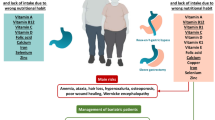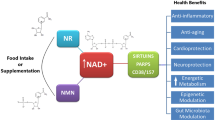Summary
In the human body the half life of the trans-isomer of 4-aminomethylcyclohexane carboxylic acid (AMCHA) is 80 minutes, and of ε-aminocaproic acid (ACS) 77 minutes. The distribution of both substances is almost exclusively extracellular. Following oral administration, absorption of ACS is significantly more rapid than that of AMCHA. Because of the slower absorption of AMCHA more constant plasma levels can be expected after oral administration than with ACS. The 8 to 20 fold greater antifibrinolytic activity of AMCHA suggests that it will be therapeutically effective at relatively low plasma concentrations.
Zusammenfassung
Die Halbwertzeit der Elimination beträgt beim Menschen für das trans-Isomere der 4-Aminomethylcyclohexancarbonsäure (AMCHA) 80 min, für die ε-Aminocapronsäure (ACS) 77 min. Aus der Bestimmung der Verteilungsräume beider Substanzen geht hervor, daß sie sich nahezu ausschließlich im extracellulären Raum verteilen. Die Geschwindigkeit der enteralen Resorption von ACS ist höher als die von AMCHA. Bei der oralen Anwendung dürften sich mit AMCHA wegen der protrahierten Resorption gleichmäßigere Blutkonzentrationen erreichen lassen als mit ACS. Die 8–20 mal höhere antifibrinolytische Aktivität der AMCHA läßt bei vergleichsweise niedrigen Blutkonzentrationen deutliche therapeutische Effekte erwarten.
Similar content being viewed by others
Literatur
Dost, F. H.: Der Blutspiegel. Leipzig: Thieme 1953.
Dubber, A. H. C., G. P. McNicol, A. S. Douglas, and B. Melander: Some properties of the antifibrinolytically active isomer of aminomethylcyclohexane carboxylic acid. Lancet 7373, 1317 (1964); zit. nach Pechet, L.: New Engl. J. Med. 273, 966 (1965).
Finney, D. J.: aus J. H. Burn and L. G. Goodwin: Biological Standardization. London: Oxford University Press 1952.
Hartert, H.: Die Thrombelastographie. Eine Methode zur physikalischen Analyse des Blutgerinnungsvorganges. Z. ges. exp. Med. 117, 189 (1951).
Kaller, H.: Tierexperimentelle Untersuchungen über Wirkungsdauer und Elimination von Trasylol. Naunyn-Schmiedebergs Arch. exp. Path. Pharmak. 246, 92 (1963).
—— Aus Henning, N., K. Heinkel u. H. Schön: Pathogenese, Diagnostik, Klinik und Therapie der Erkrankungen des exokrinen Pankreas, S. 307. Stuttgart: Schattauer 1964.
Melander, B., G. Gliniecki, B. Granstrand, and G. Hanshoff: Amikapron — the antifibrinolytically active isomer of AMCHA. Xth Congress of the International Society of Haematology, Stockholm 1964.
—— —— —— —— Biochemistry and toxicology of Amikapron, the antifibrinolytically active isomer of AMCHA. (A comparative study with ε-aminocaproic acid.) Acta pharmacol. (Kbh.) 22, 340 (1965).
Nilsson, I. M., S. E. Björkman, and L. Andersson: Clinical experiences with ε-aminocaproic acid (ε-ACA) as an antifibrinolytic agent. Acta med. scand. 170, 487 (1961).
Okamoto, S., and U. Okamoto: Amino-methyl-cyclohexane carboxylic acid: AMCHA. A new potent inhibitor of the fibrinolysis. Keio J. Med. 11, 105 (1962).
—— An active stereo-isomer (trans-form) of AMCHA and its antifibrinolytic (antiplasminic) action in vitro and vivo. Keio J. Med. 13, 177 (1964).
Oshiba, S., and S. Okamoto: Influence of AMCHA on the activity of fibrinolysin (plasmin). Keio J. Med. 11, 117 (1962).
Sato, S., Y. Ishibashi, T. Endo, T. Watanabe, and K. Nakajima: Clinical use of ε-amino-N-caproic acid on methropathia hemorrhagica. Keio J. Med. 8, 267 (1959).
Weirauch, S.: Vergleichende Untersuchungen über Verteilung und Elimination von p-Aminomethylcyclohexancarbonsäure (AMCHA) und ε-Aminocapronsäure (ACS) bei Mäusen. Dissertation, Göttingen 1966.
Author information
Authors and Affiliations
Additional information
Herrn Prof. Dr. P. Holtz, Frankfurt a. M., zum 65. Geburtstag.
Rights and permissions
About this article
Cite this article
Kaller, H. Enterale Resorption, Verteilung und Elimination von 4-Aminomethylcyclohexancarbonsäure (AMCHA) und ε-Aminocapronsäure (ACS) beim Menschen. Naunyn-Schmiedebergs Arch. Pharmak. u. Exp. Path. 256, 160–168 (1967). https://doi.org/10.1007/BF00539612
Received:
Issue Date:
DOI: https://doi.org/10.1007/BF00539612




